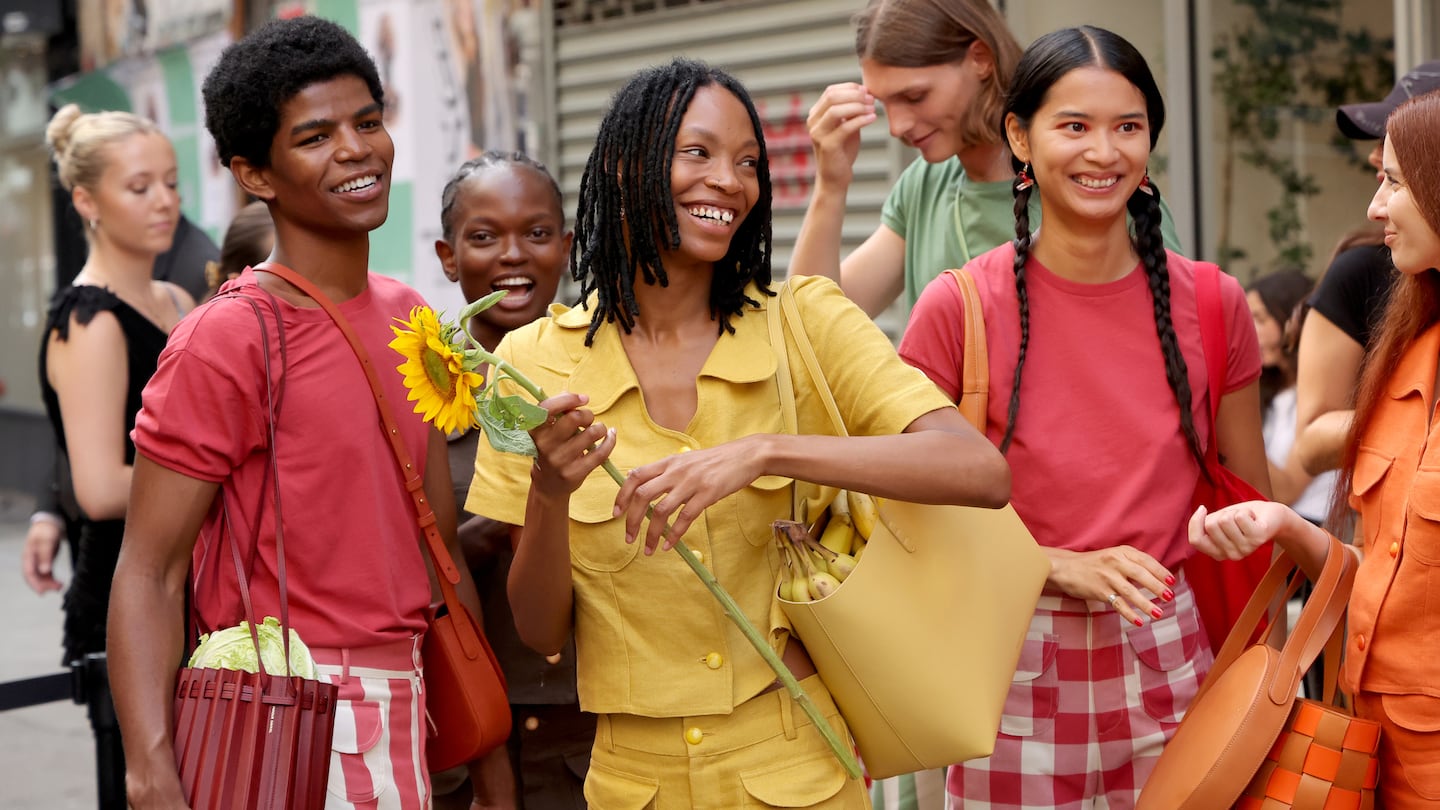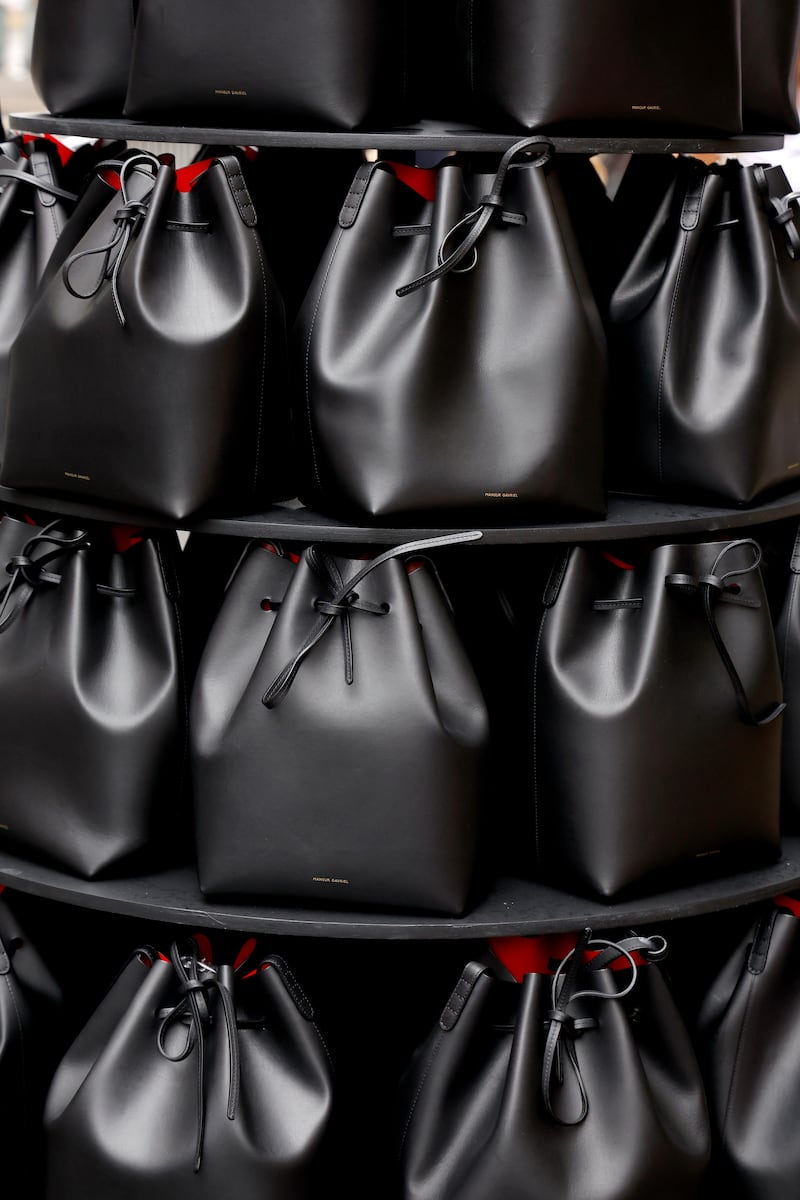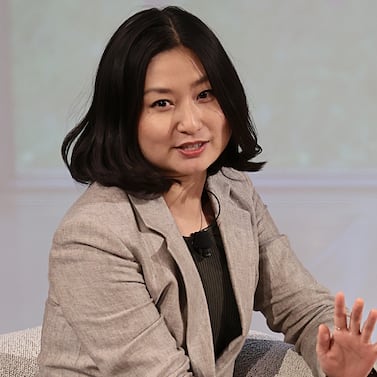
The Business of Fashion
Agenda-setting intelligence, analysis and advice for the global fashion community.

Agenda-setting intelligence, analysis and advice for the global fashion community.

For Mansur Gavriel, what’s old is new again.
On Sunday afternoon, the brand staged its first New York Fashion Week presentation since 2019, taking over a block on Orchard Street in the Lower East Side neighbourhood to showcase its signature minimalist handbags.
The event served as a 10th birthday party for the New York-based label, launched by artists Rachel Mansur and Floriana Gavriel in 2013. Before and after a brief, almost missable runway moment, guests were invited to munch vegetable canapés and take a free commemorative tote bag.
The showcased collection, however, did not feature any new products. Instead, it highlighted the label’s best-sellers from the past decade, including its circle satchel and once-viral drawstring bucket bag, dozens of which also comprised a giant tower activation at the entrance of the event.
ADVERTISEMENT

These pieces will be released again as part of Mansur Gavriel’s return to the public sphere, according to the company’s new chief executive Maria Borromeo, who joined in May to spearhead the overhaul of the brand.
“When Mansur Gavriel launched, we were speaking to a Millennial or Gen-X consumer,” said Borromeo. “Now there’s this Gen-Z demographic that can afford our bags and shoes, and it’s a super exciting opportunity to start speaking to this younger demographic.”
To execute this plan, the brand will focus on profitability, offer a tighter product assortment and allow the namesake designers Mansur and Gavriel to take creative reign again, Borromeo said.
While Mansur Gavriel is no longer drawing the kind of crowds it did during its peak in the 2010s — the rainy weather Saturday certainly didn’t help — the brand has plenty of reason to celebrate, as well as to recalibrate.
At its peak, Mansur Gavriel was one of the most coveted and recognisable brands in American fashion. Founders Mansur and Gavriel encountered near-overnight success with the 2013 release of the dual-colour drawstring bucket bag. With a bright lining, sleek leather exterior and an accessible price tag, it routinely sold out within hours of release. Shoppers waited months for the next drop, and the demand seemed at one point insatiable.
Mansur Gavriel was also a pioneer of the millennial pink aesthetic, even beating Glossier to the game with its san-serif logo, minimalist design, imagery featuring large plants and fruits, and, of course, a signature blush hue that adorned the walls of its stores.
But those stores — flagships in New York and Los Angeles — have since shuttered. By the time the brand sold a majority stake to private equity firm GF Capital Management & Advisors in 2019, its cachet was already fading. Consumers have gravitated toward more a idiosyncratic, niche way of dressing, exemplified by TikTok’s mermaidcore and other hyperfast trends. The contemporary space also welcomed a number of new competitors such as By Far, Staud and Polène. In the years following its meteoric rise, Mansur Gavriel introduced new categories like apparel and shoes, but nothing quite resonated the way its early handbags did.
Typically, a cash injection from a private equity investor would allow a startup to scale considerably. But when the pandemic struck, Mansur Gavriel eliminated its retail footprint and ready-to-wear offering, and remained under-the-radar even as many of its peers enjoyed a post-pandemic boom. Mansur and Gavriel, meanwhile, stepped away after the GF Capital acquisition.
ADVERTISEMENT
In the years that followed, Mansur Gavriel’s product offering got muddled, according to Borromeo.
“There was a shift in business strategy that took the brand into a more trend-focused era,” she said. “We want to get away from the cycle of creating newness for the sake of it.”
Instead, Borromeo plans to reduce the overall number of styles as well as the volume of each SKU, a strategy that will also help the company avoid excess inventory.
“Far too frequently, businesses are focused on top-line sales, and what this ends up creating are potential inventory situations that damage the brand and erode margins,” said Borromeo, who was a member of the founding team at Thakoon and later served as president of Hudson Jeans. “We really want to set the stage for sustainable growth.”
Nor is the brand counting on another lightning-in-the-bottle moment, as it had with its famous bucket bag. “Rachel and Floriana never set out to design an ‘It’-bag,” Borromeo said. “If we do hit on that again, that’ll be amazing, but our focus is not trying to create an It bag, because if we did, that’s where we’d get into trouble with the merchandising.”
For now, safer is better: Mansur Gavriel is hoping that a new cohort of Gen-Z shoppers will embrace the same straightforward handbags and totes that had won the hearts of their Millennial predecessors.
The quality has not changed, according to the founders: The brand still works with the same tanneries as it had 10 years ago.
“It starts with the leathers,” said Floriana Gavriel. “There’s something real to it, not trying to cut corners or make a better margin.”
Mansur Gavriel, a New York-based accessories brand that launched in 2013, has hired Maria Borromeo to be its new chief executive, the company announced.
GF Capital Management, the brand’s first outside investor, has a portfolio that includes Mark Cross and Oscar de la Renta.
Mansur Gavriel is generating Birkin-esque waiting lists for its colourful handbags. Founders Rachel Mansur and Floriana Gavriel discuss getting the brand off the ground and the perks and pitfalls of its rapid growth.

Cathaleen Chen is Retail Correspondent at The Business of Fashion. She is based in New York and drives BoF’s coverage of the retail and direct-to-consumer sectors.
Designer brands including Gucci and Anya Hindmarch have been left millions of pounds out of pocket and some customers will not get refunds after the online fashion site collapsed owing more than £210m last month.
Antitrust enforcers said Tapestry’s acquisition of Capri would raise prices on handbags and accessories in the affordable luxury sector, harming consumers.
As a push to maximise sales of its popular Samba model starts to weigh on its desirability, the German sportswear giant is betting on other retro sneaker styles to tap surging demand for the 1980s ‘Terrace’ look. But fashion cycles come and go, cautions Andrea Felsted.
The rental platform saw its stock soar last week after predicting it would hit a key profitability metric this year. A new marketing push and more robust inventory are the key to unlocking elusive growth, CEO Jenn Hyman tells BoF.